This Friday at 1:30 am Madrid, CA, Boca Juniors will play the first leg of the 2023 Copa Libertadores semi-final in their own historical stadium (La Bombonera) against the Brazilian side SE Palmeiras.
Boca boast the most Libertadores wins (six); however, the last they achieved was back in 2007. With an unsuccessful domestic league campaign, Jorge Almirón hopes to turn things around by reaching the final. In the Libertadores’ group stage, they won the group with 13 points with only two goals suffered, while in the knockout stage, they eliminated both the Uruguayans and Racing through penalties.
Conversely, Palmeiras were champions twice in a row back in 2020 and 2021 under the same coach, Abel Ferreira. They are currently placed in the second spot in the Brazilian Championship with a seven-point gap to the leaders, Botafogo, led by Bruno Lage. With 14 games left and with the dream of the Libertadores alive, Abel’s Palmeiras still have a chance of saving their season.
In this season’s Libertadores, Palmeiras also achieved first place in their group, yet with one bonus, they were the team that won the most points overall (15). In the knockout stage, they were flawless by eliminating Atlético Mineiro and Deportivo Pereira with no goals conceded.
In this tactical analysis, we’ll try to understand both the way of play and where these two teams can hurt each other, bearing in mind their own strengths and frailties.
Potential line-ups
Initially, Boca will undoubtedly count on the ex-Manchester United Sergio Romero for the goalkeeper position, as he has been the first choice in this 2023 season.
To understand the possibilities of players more expected to play as centrebacks, it’s a must to know what are Almirón’s general tactics, specifically his game model. Even though, as we are going to see further, Boca is used to playing in a 4-3-3, they can surprise with a backline of five, as he did in the quarter-finals against Racing.
Due to Palmeiras’ offensive football, we wouldn’t be surprised if the “Xeneizes” presented themselves in a 5-4-1. With that said, we foresee the backline to be constituted by the youngster Nicolás Valentini, the captain Marcos Rojo, and Nicolás Figal.
As for full-backs, we expect to see the Colombian Frank Fabra covering the left flank due to what he can give to his team both offensively and defensively. By the right, we think that both Luis Advíncula and Marcelo Weigandt are the most prominent candidates; however, due to the verticality of Palmeiras, Jorge Almirón can opt for Marcelo since he is more defensive than Luis.
Ezequiel Fernández and Pol Fernández would be the two central midfielders as usual in Boca Juniors since Alan Varela’s departure to FC Porto. The promising Valentín Barco and Cristian Medina are expected to play by the left and right wing, respectively.
Finally, “El Matador”, Edinson Cavani, will most certainly play as a solo centre-forward. Boca can really take advantage of his experience and technical qualities, especially his shooting and header.
Boca Juniors (5-4-1): Romero; Fabra; Valentín; Rojo(c); Figal; Weigandt; Barco; Pol; E. Fernández; Medina; Cavani
Conversely, Palmeiras will surely play with Weverton da Silva between the posts, as he has been Abel’s first choice since he took charge.
Captain Gustavo Gómez also has been a firm choice to lead the backline, and we expect him to play in the initial line-up. Our most considerable doubt goes to the player that will play alongside him, where there are two strong candidates: Luan and Murilo. These two played almost the same amount of minutes during the season, but if we had to guess, maybe Murilo would be Abel’s choice not only because he played their last game but also because of his ability to find teammates between the lines.
We also foresee Joaquín Piquerez and Marcos Rocha being the chosen full-backs, by the left and right, respectively.
Zé Rafael will most likely act as a pivot due to his characteristics to coordinate and organise the game from the back. The option to play ahead of him should lay on the 22-year-old Gabriel Menino, one of the most constant options due to his outstanding qualities. We think that the most probable option to play as number 10 is Raphael Veiga, who already had 28 direct goal contributions this season.
As wingers, we think that the technician Artur will play by the left, which is not his most desirable side, and Mayke by the right, a right-back who can play ahead due to his physic and verticality.
For the centre-forward position, there are two leading candidates: Rony and Endrick, who will depart for Real Madrid next summer. Yet we think that Rony will be the first choice due to his experience and positive impact on his team during offensive and defensive moments.
Palmeiras (4-2-3-1): Weverton; Piquerez; Murilo; Gómez; Marcos; Rafael; Menino; Veiga; Mayke; Artur; Rony
Where the home team can threaten and their weaknesses
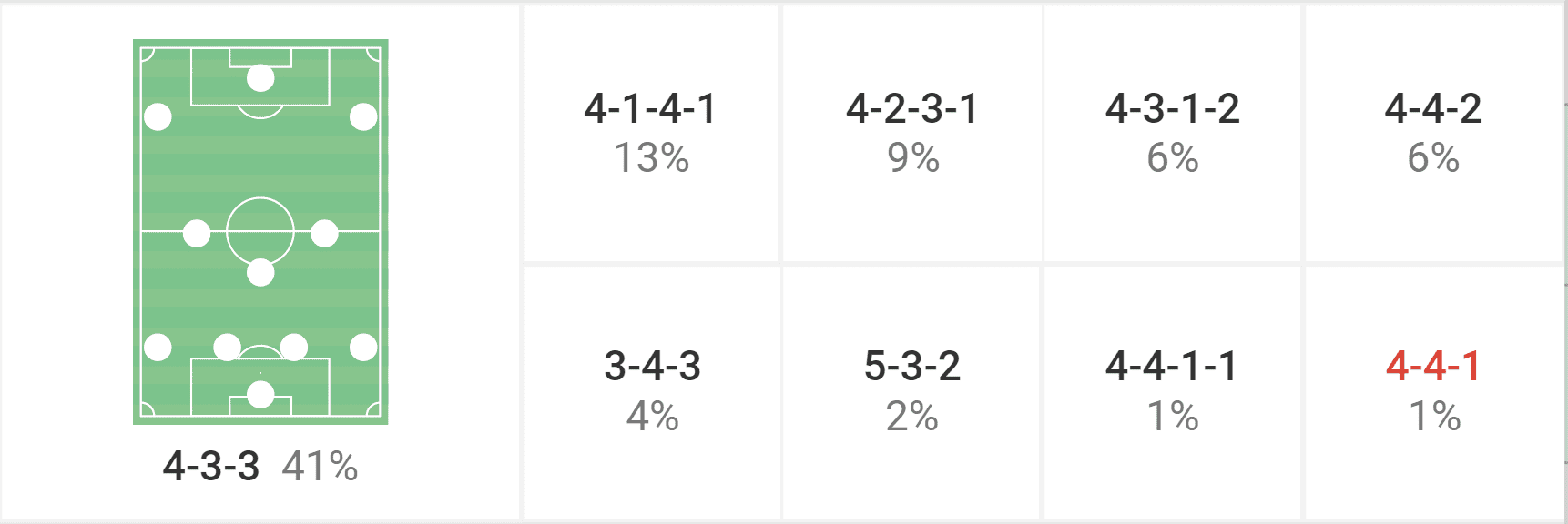
As shown above, Boca usually play in a classic 4-3-3, in a 4-1-2-3 with a single pivot and two more advanced midfielders, normally Medina and Pol Fernández. However, as we mentioned, a system with three centrebacks can take place, and as it goes, we’ll try to adapt our analysis to this Boca’s unusual formation.
There are interesting combinations between these two, especially during the build-up process. Typically, the ball-side midfielder, in other words, the midfielder from the flank where the ball carrier is located, tends to approximate in order to give his team numeric superiority. This movement often attracts the opponent, and the other side midfielder takes advantage of it by staying deep, seeking the space on his back.
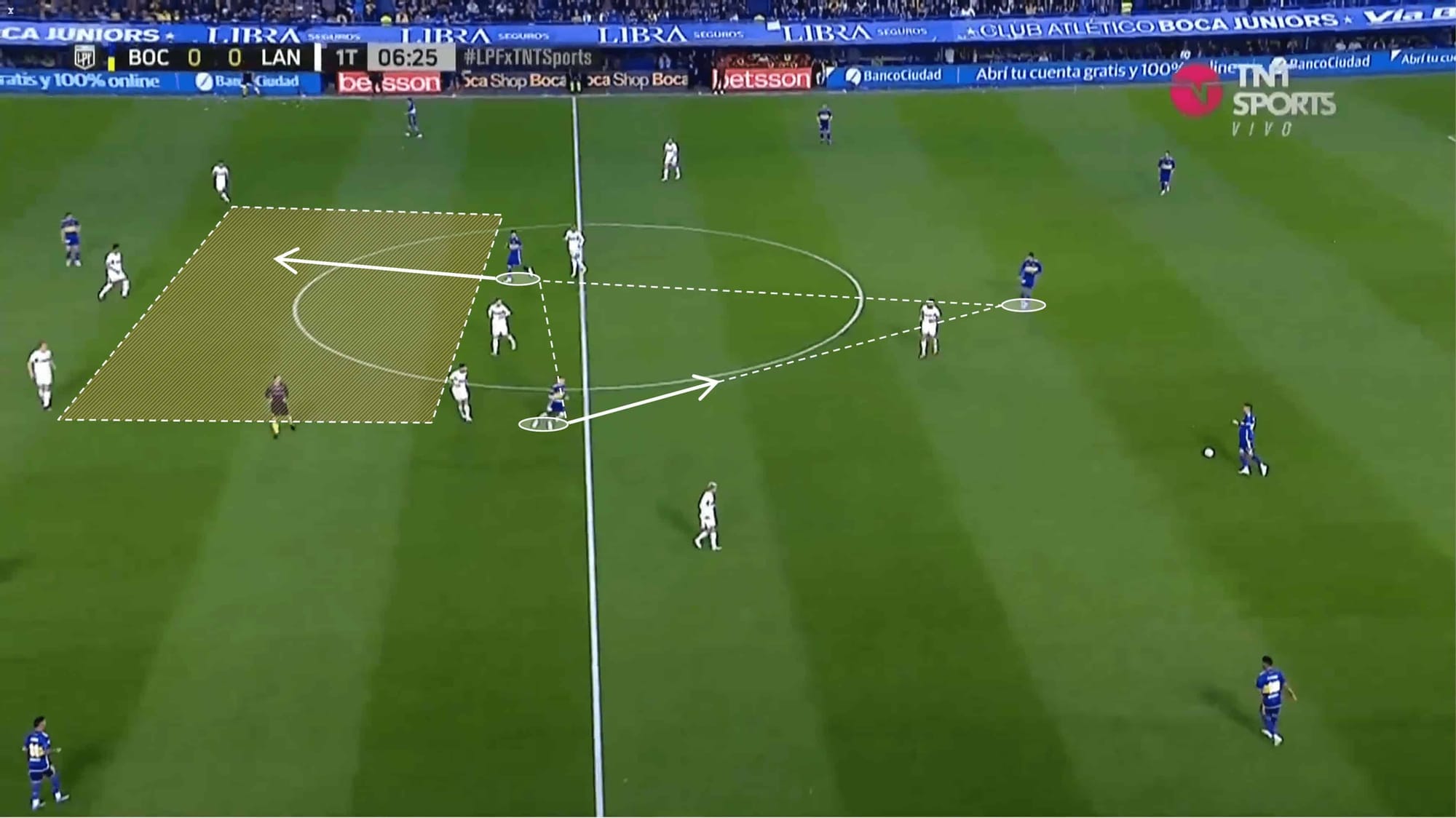
They are a team that feels comfortable to attack by the flanks, especially by the left, where they have offensive and technically gifted players like Barco and Fabra.
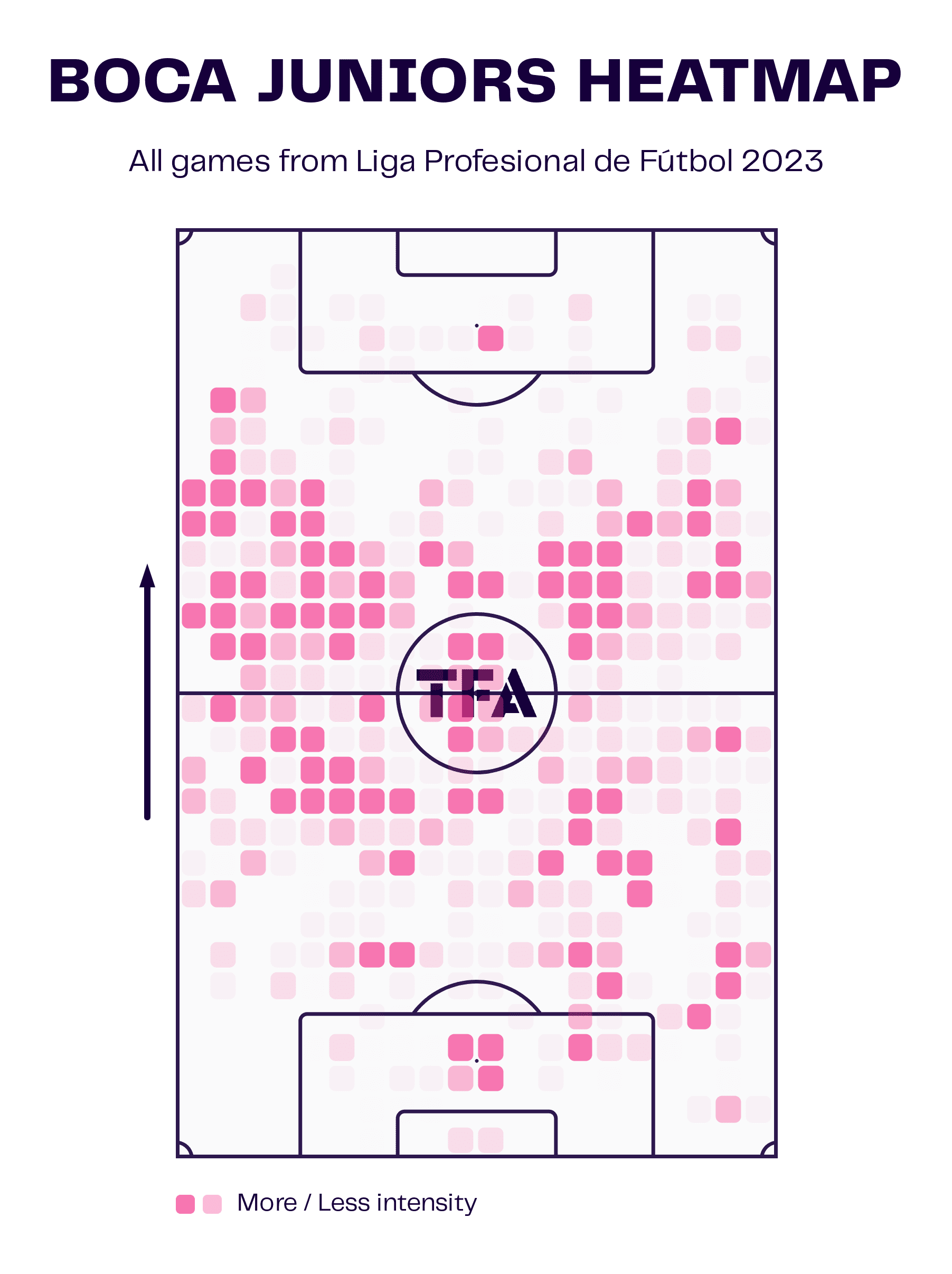
Almirón tries to shape players’ characteristics into his game model, primarily visible in the corridors where he follows an asymmetric formation. For instance, the coach instructed the youngster to seek more interior spaces, giving width to the Colombian due to Barco’s talent on the ball and Fabra’s verticality.
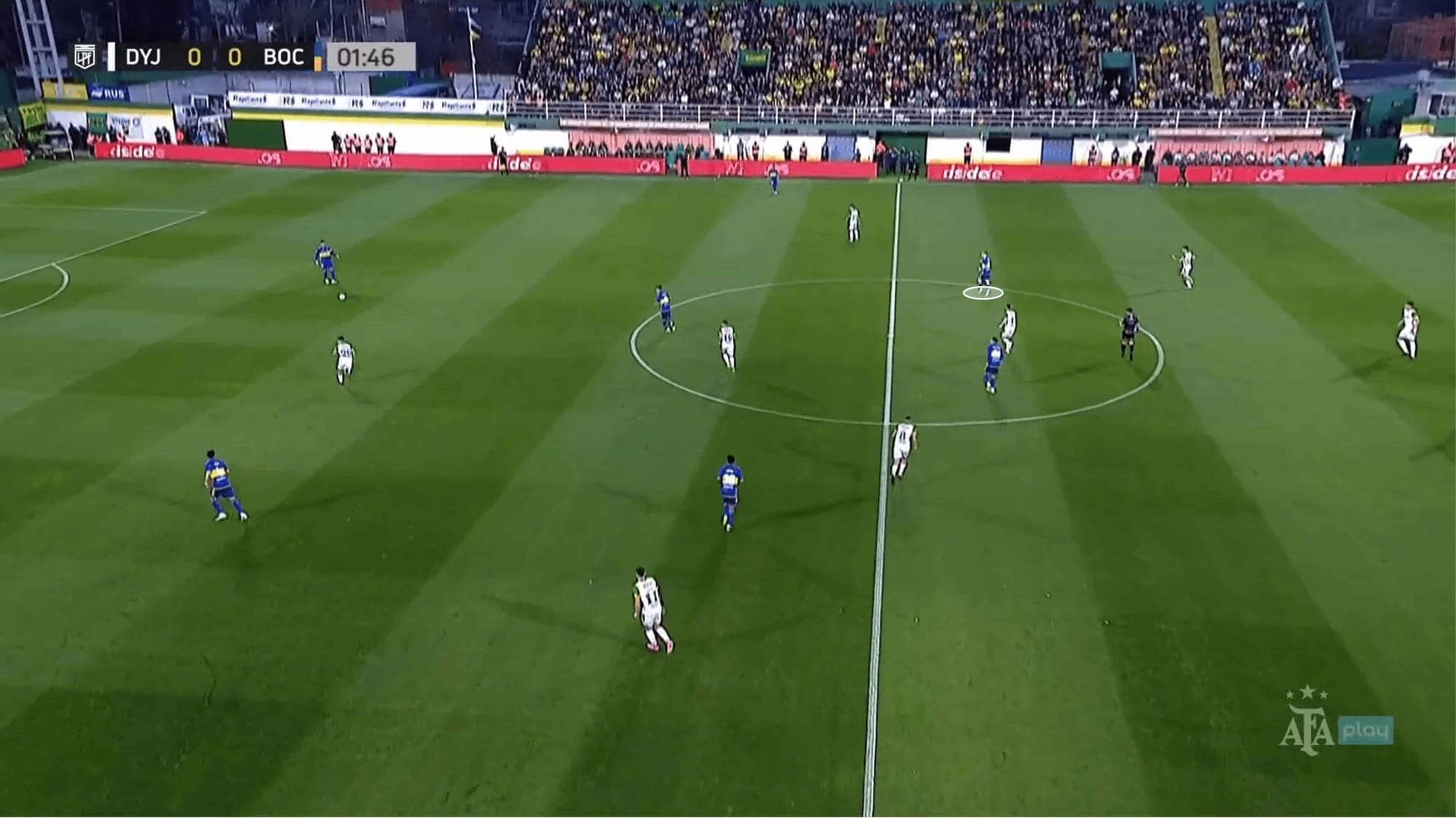
There are interesting combinations between these two during the game, and it’s common to see Barco making movements taking advantage of gaps left by the defenders. For instance, as we referred, Barco seeks interior spaces, yet when the full-back presses Fabra, he quickly moves to his back.
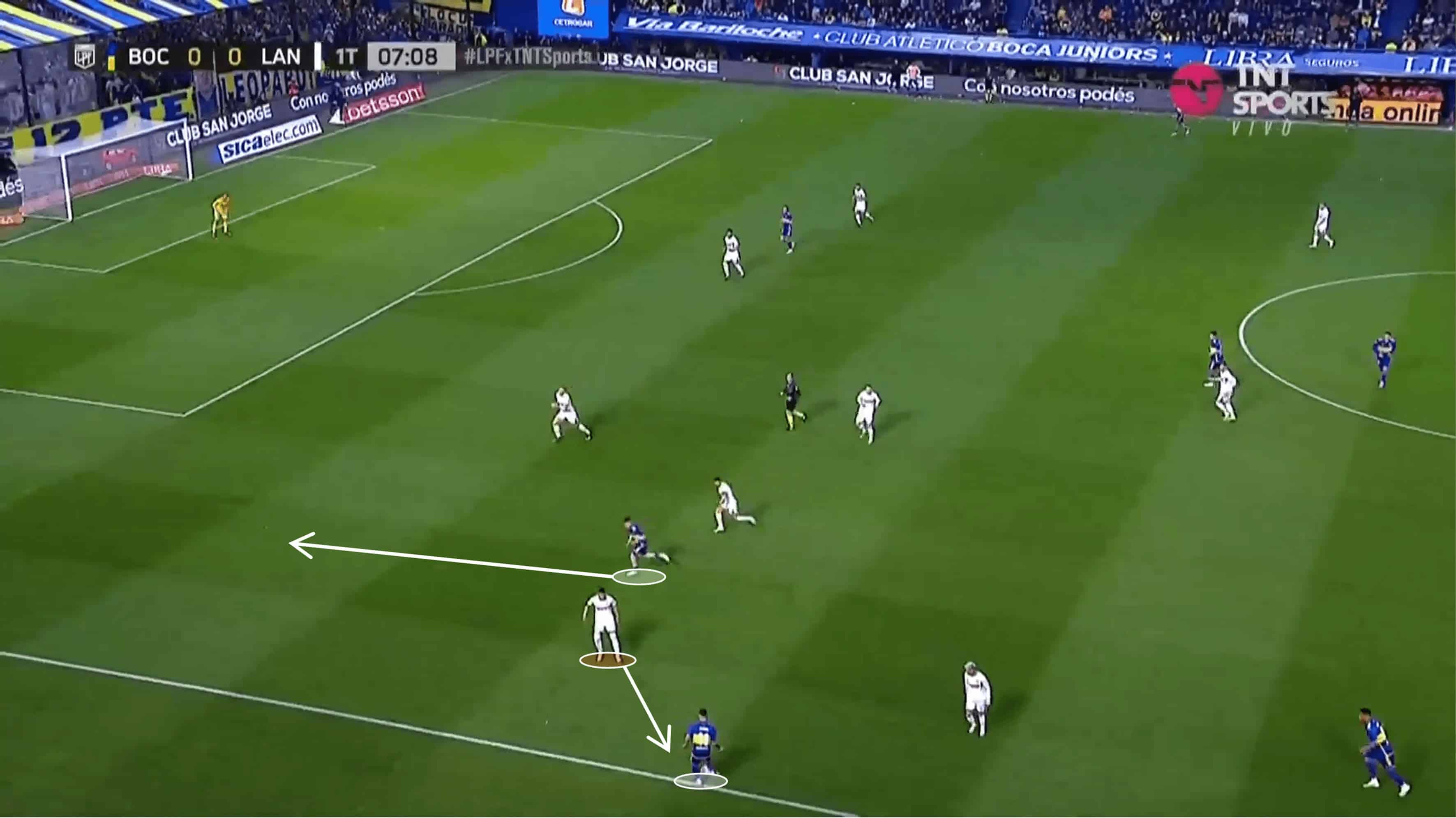
On the other hand, considering that Weigandt will play, then it is expected a more backtracked positioning than Advíncula by the right. Still concerning full-back positioning, it is essential to note that in an initial phase, they are low on the pitch so that they can assist their team while building up from the back.
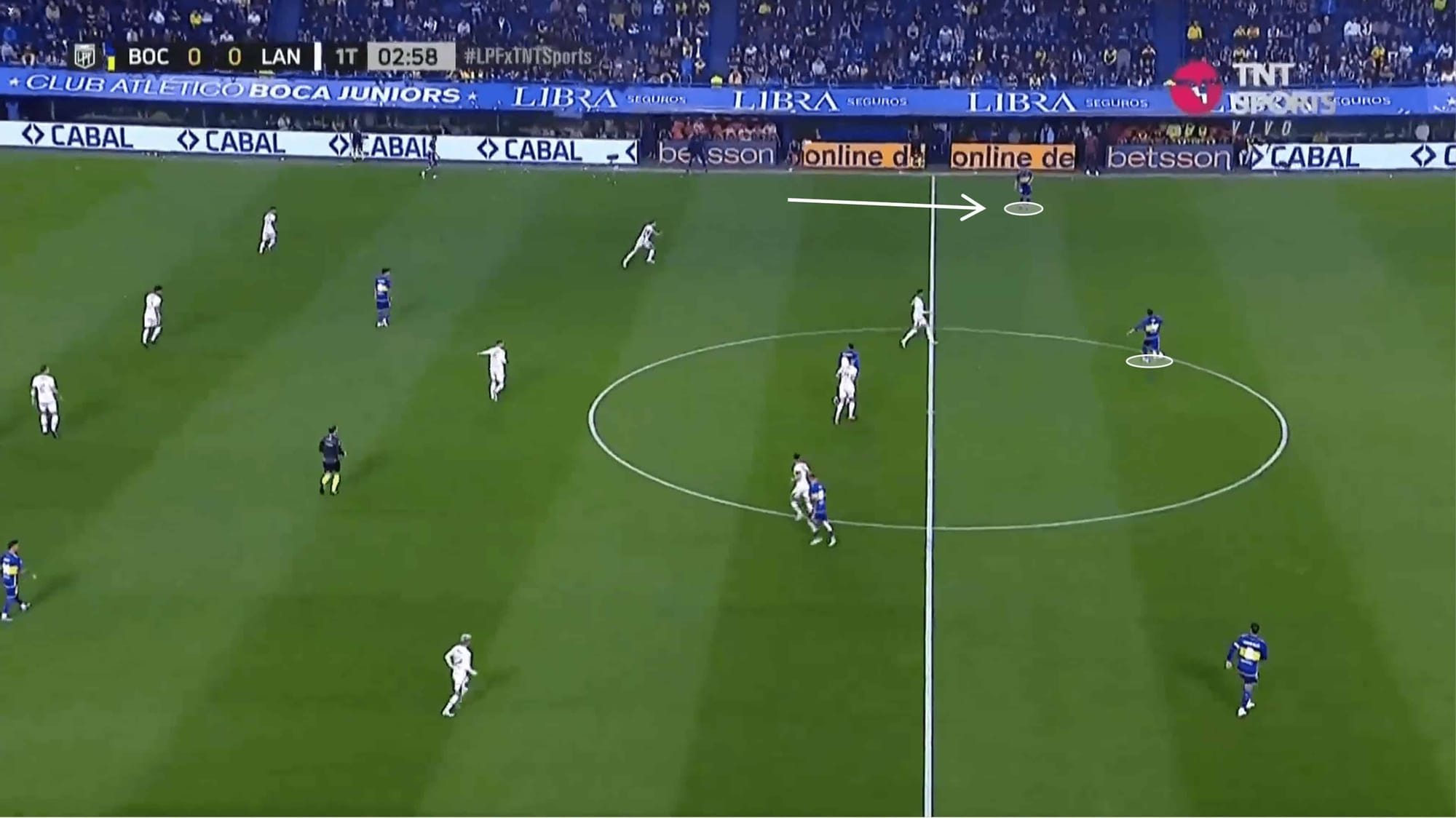
However, supposing they present themselves in a three-centre-back system, the right and left-back will have more freedom concerning this aspect.
Like Fluminense, the “Xeneizes” like having one player using the width when the ball is on the opposite flank to take advantage by quickly turning the side of the game through a long pass. However, this could have adverse effects, especially during the defensive transition.
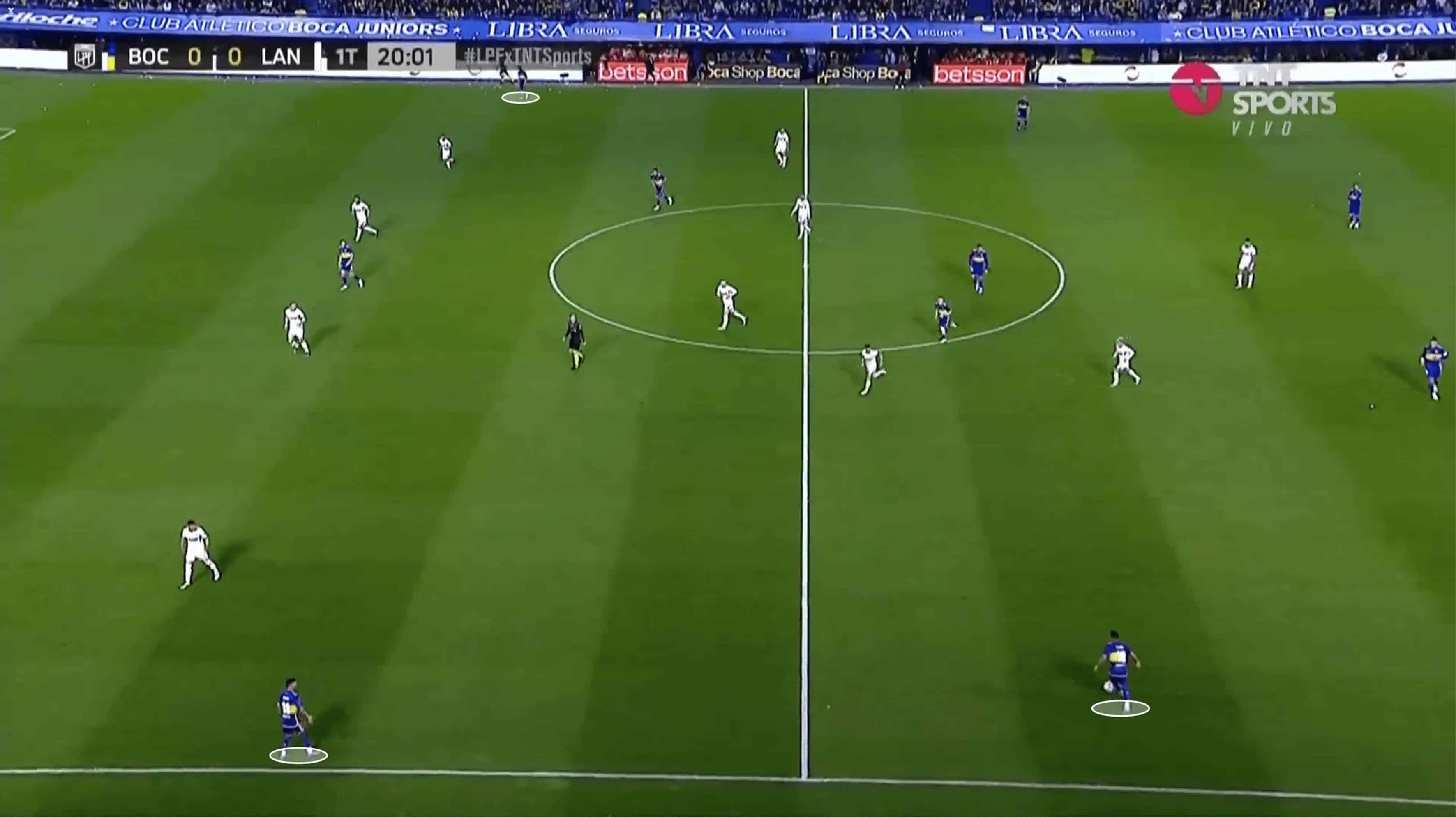
We wouldn’t be surprised if Abel explored this offensive opportunity by looking for flank counterattacks with his agile and quick wingers. This is one of the reasons we speculate that Almirón could opt for a three-centre-back system: assure his team defensively during these transitions.
Like Palmeiras, they are a team that also likes to build from the back through articulation with the midfielders in this process. Yet, in our opinion, they have slightly less technical players to succeed in this process, and as a result, on Friday, we expect a Boca playing a more direct game.
When defending, Boca are intense, aggressive and like to press relatively high on the field. However, as usual, big spaces between the lines are created, and Palmeiras will undoubtedly take advantage of that since the interior game is one of their best features.
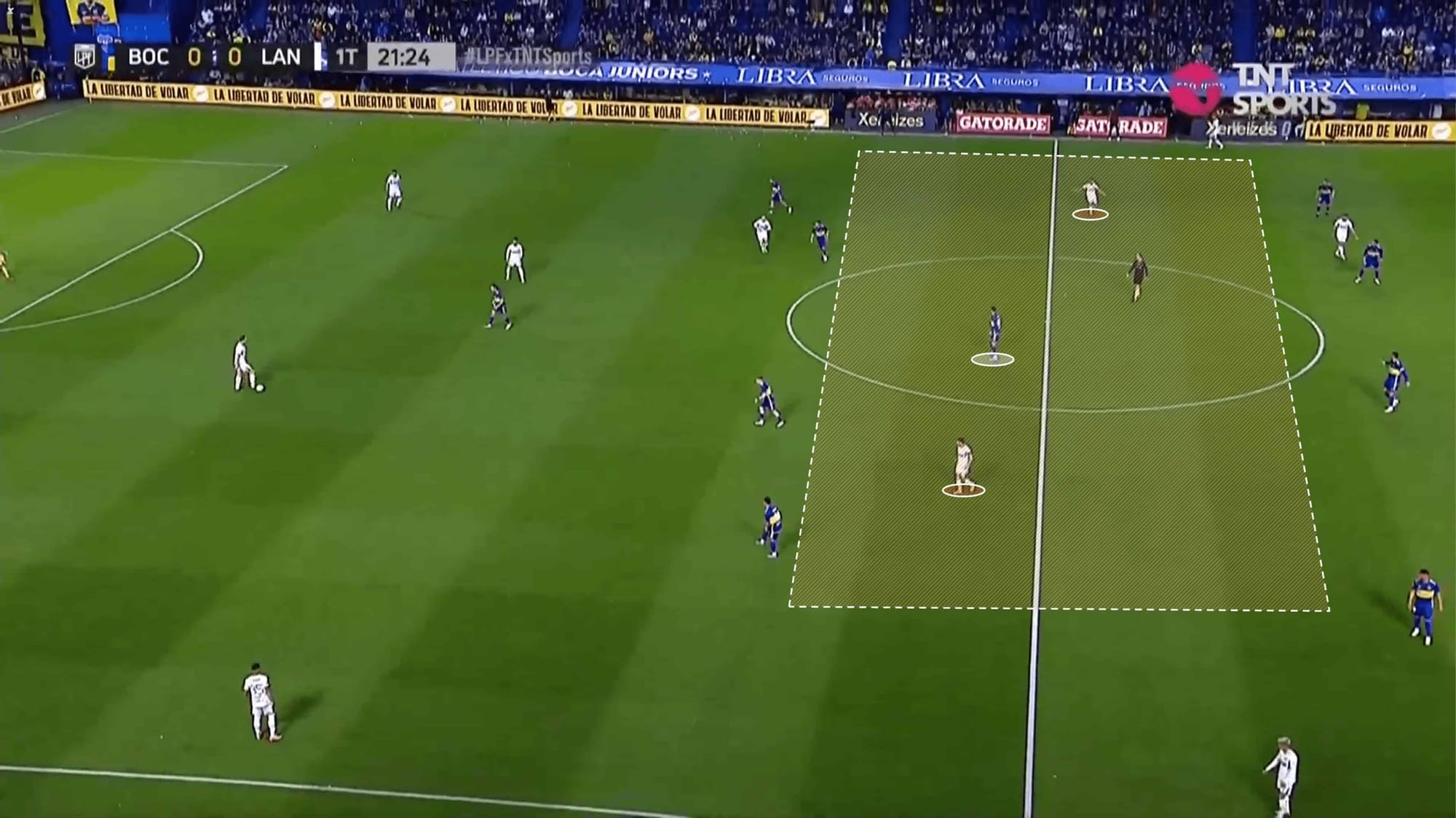
Additionally, they are a team that overloads the side of the ball, especially when they are recovering to increase the odds of success. Yet, this is a risk since it opens significant gaps on the opposite flank, and if the opposition successfully plays onto the other side, Boca can suffer a dangerous attack.
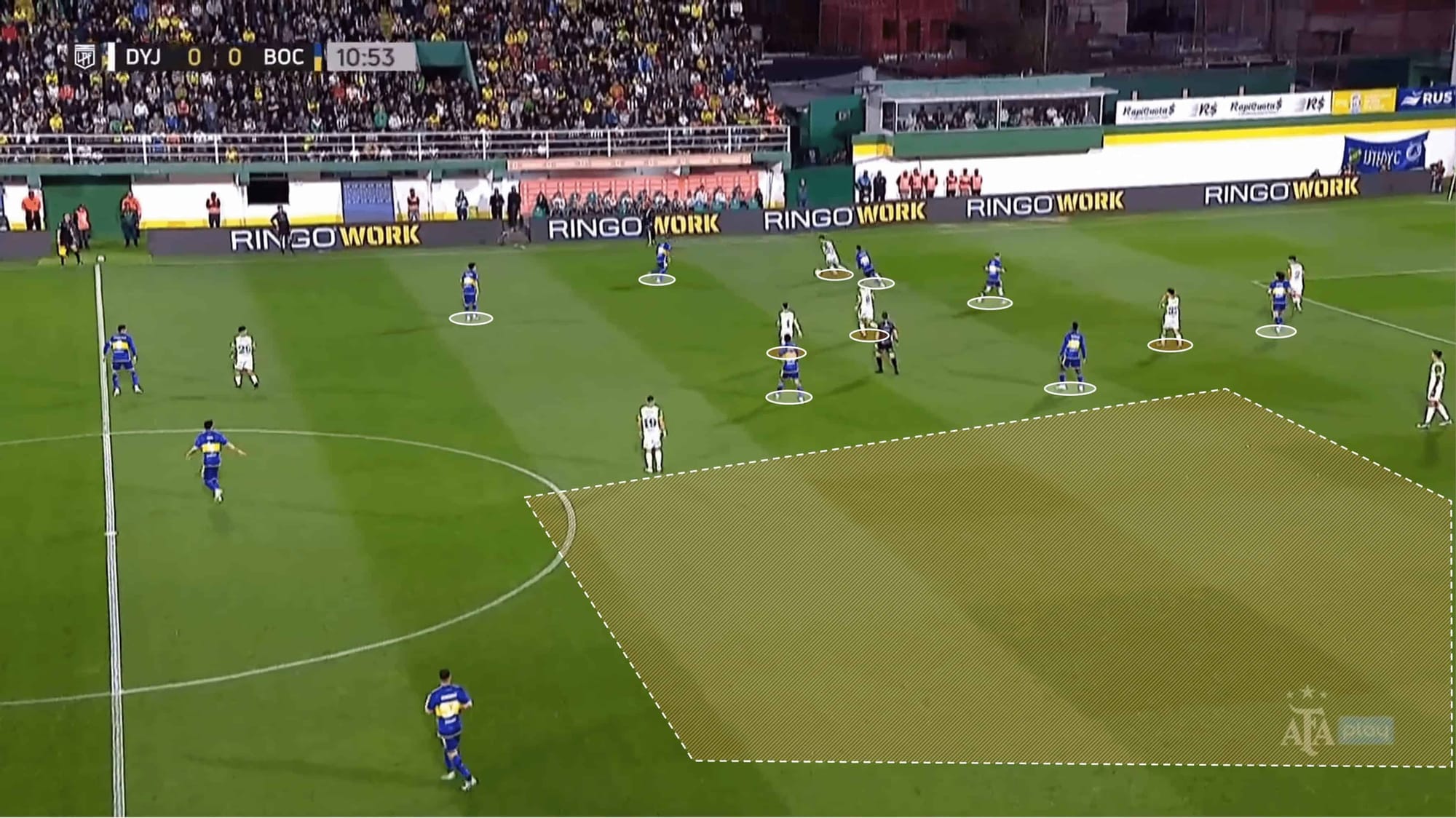
Palmeiras’ identity and weaknesses
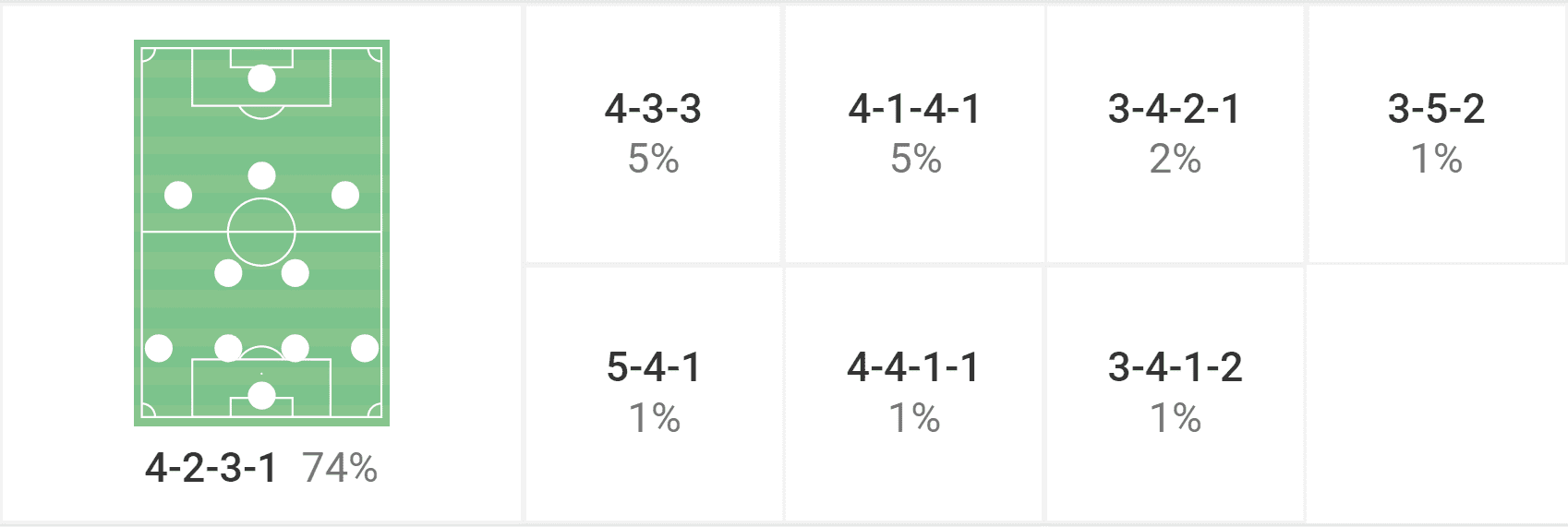
On a general basis, Palmeiras play in a 4-2-3-1 system; however, it has several changes during the different moments of the game.
While building up, they have the preference to follow a three-man build-up approach with the interior game as their primary target to hurt the opposition. Assuming the initial line-up as above, Marcos Rocha will be the player who will integrate the backline while constructing from the back.
Yet, we found it interesting that Abel uses the fact of playing with two right-backs in his favour, where he adapts their best characteristics in Palmeiras’ offensive puzzle. In this case, he opts for having Mayke as a winger due to his physical qualities, yet while defending, he is repositioned as right-back and Marcos as right midfielder.
Similar to Boca, the two more backtracked midfielders, Zé Rafael and Gabriel Menino, are quite participative during build-up and support the ball carrier to have numeric superiority.
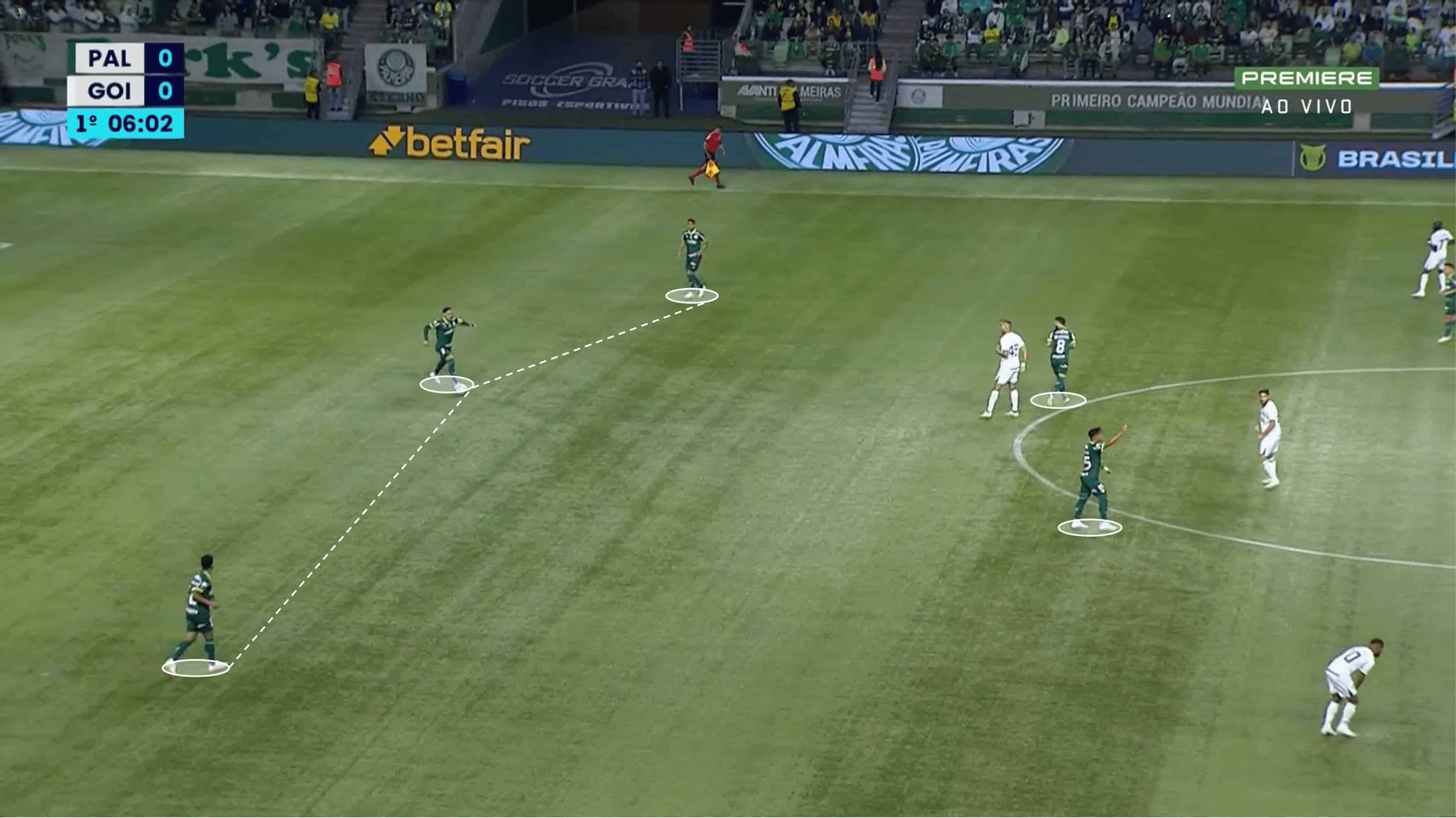
The attacking process of Palmeiras looks like a diamond in the midfield, where the offensive midfielder and left-winger (Artur) are on the same level, looking for their space between the lines.
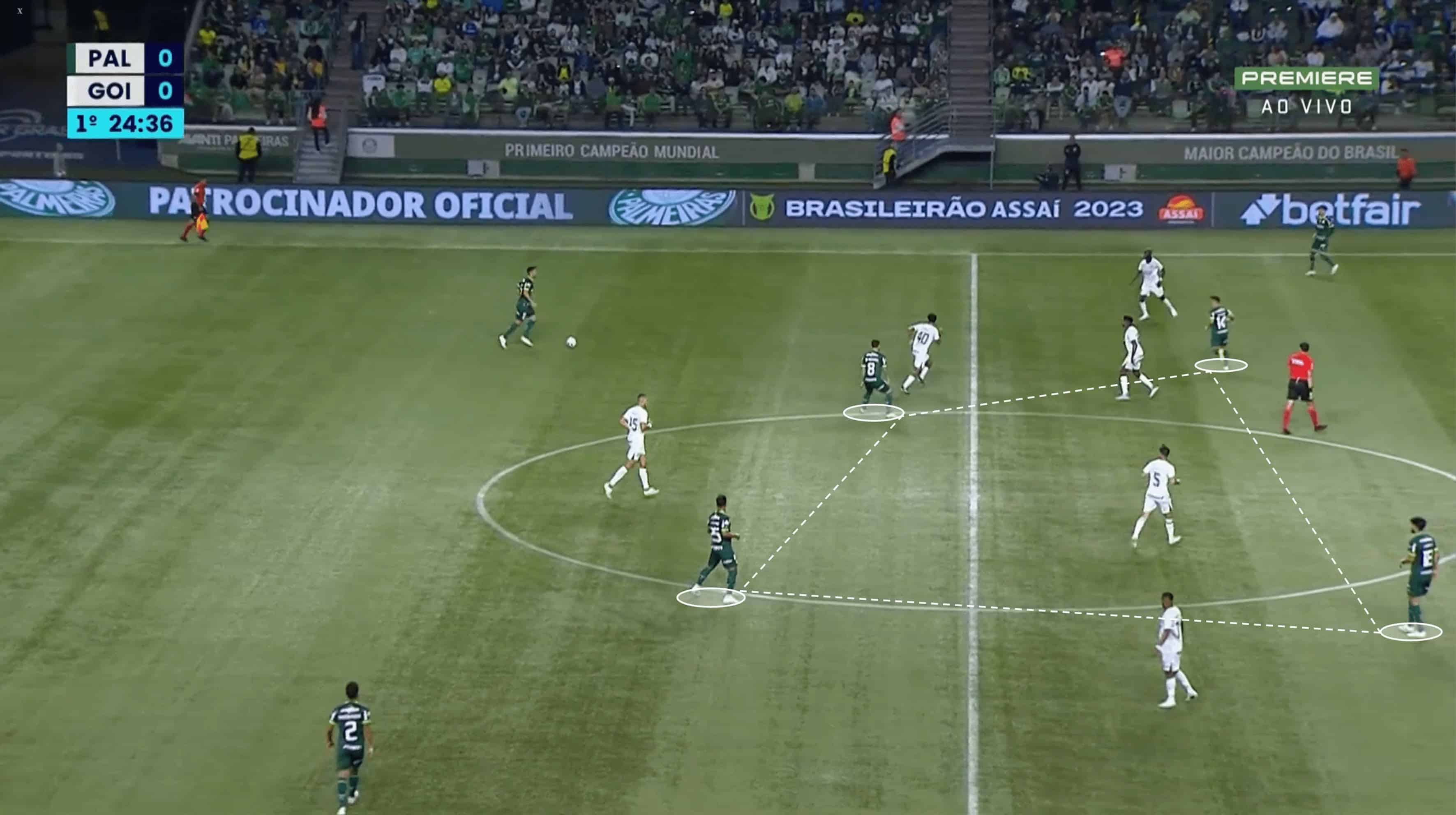
This diamond often gives them superiority and ease to play inside the opponent’s lines. However, it can be taken into account by reinforcing the inside zones and by pressing the ball carrier. In our opinion, it’s something that Boca should work on since they have some problems in controlling those spaces.
The more advanced element of the pitch tends to be Rony or Endrick, but let’s focus on Rony, who is the most likely to play as a striker. He is characterised by his technicity and work rate both offensively and defensively during the game.
We can see him constantly seeking a specific space, but he seems comfortable attacking the defenders’ back. Having that said, Boca can prevent these types of threats by placing three central defenders.
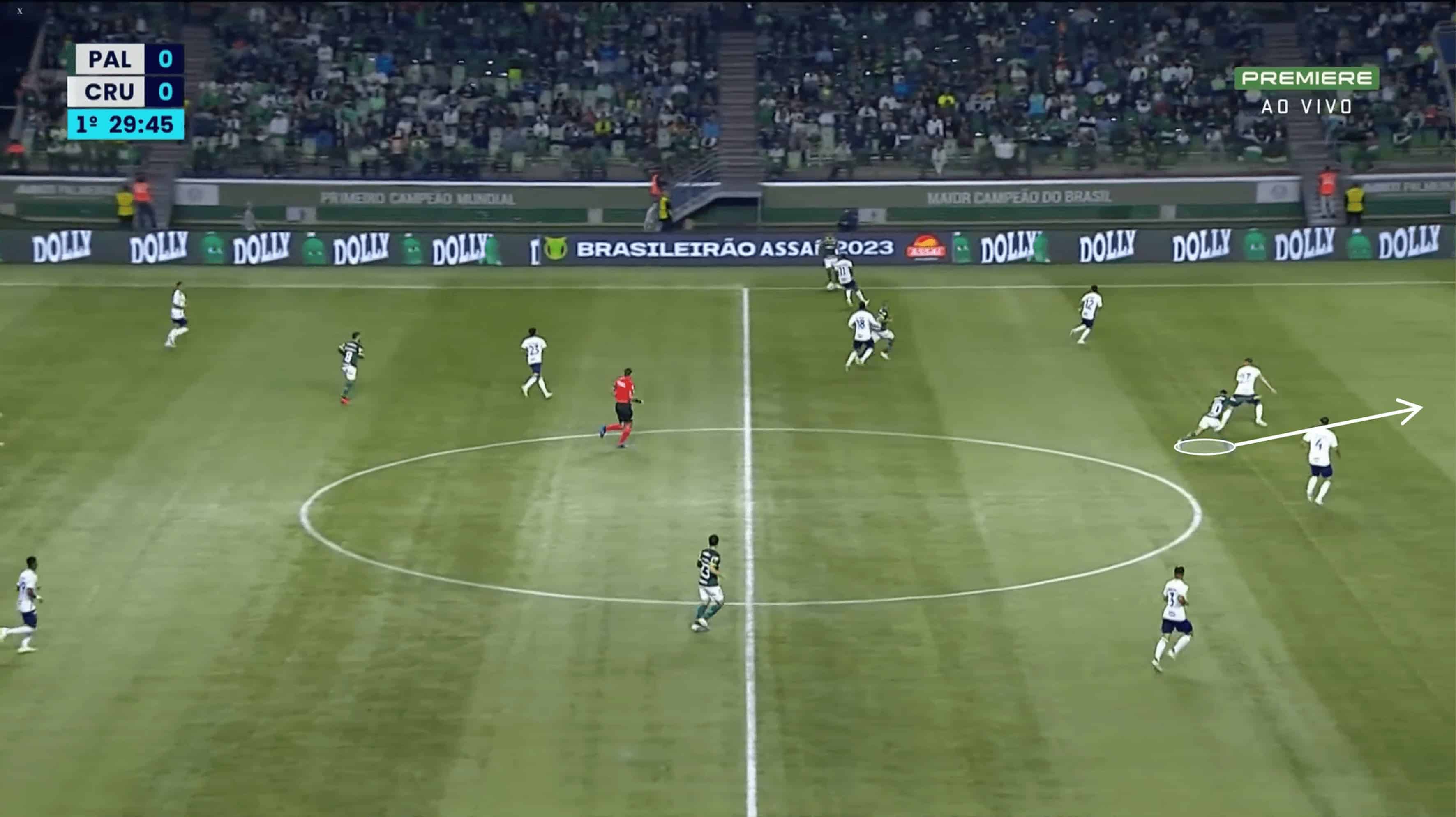
Where we think Boca can hurt the São Paulo side is when they expose themselves in counterattacks, more specifically when they lose the balance given by Rafael and Menino.
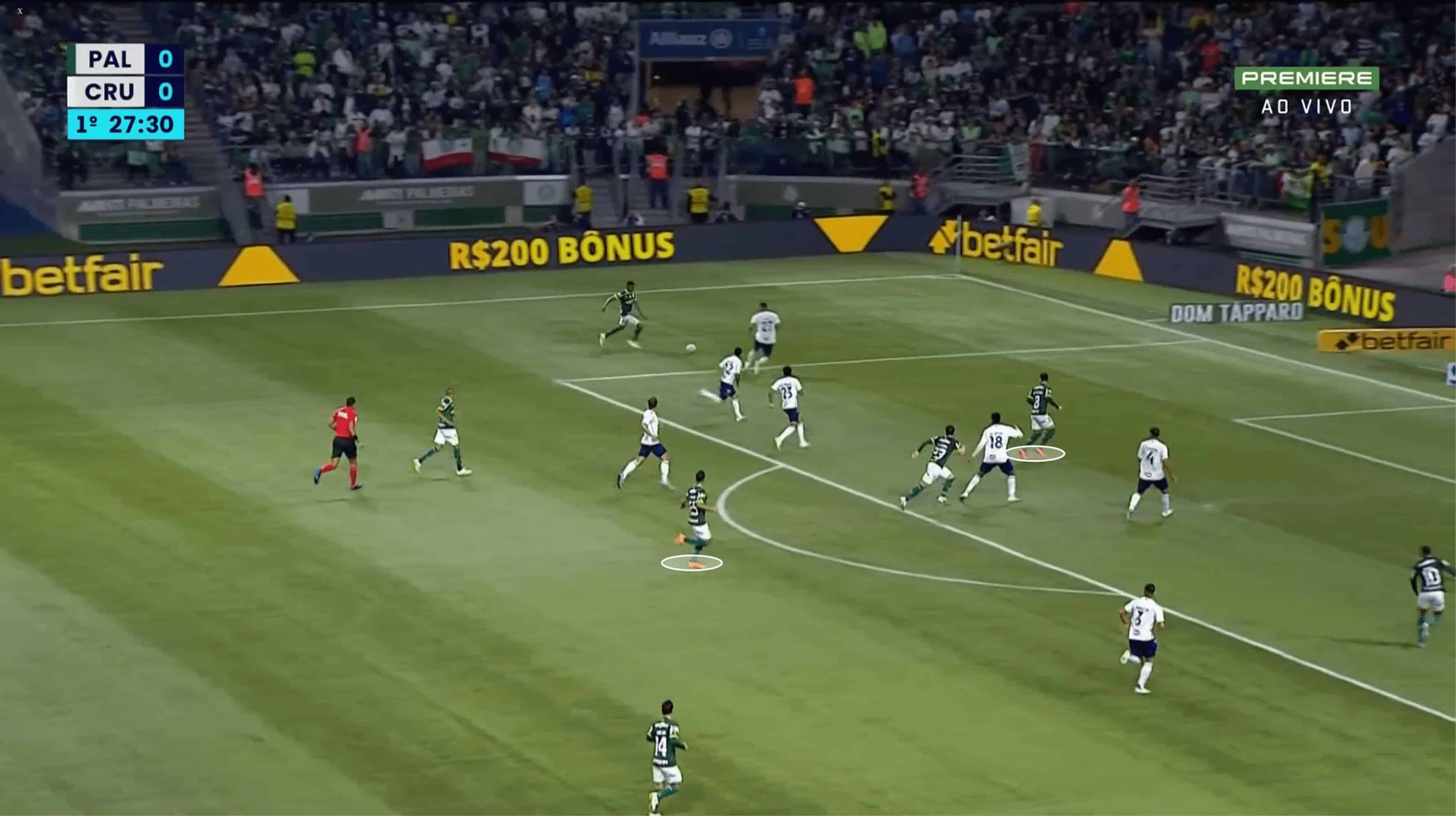
Fast and agile players like Barco and Fabra can represent a severe threat while conducting a transition, similar to what we see below.
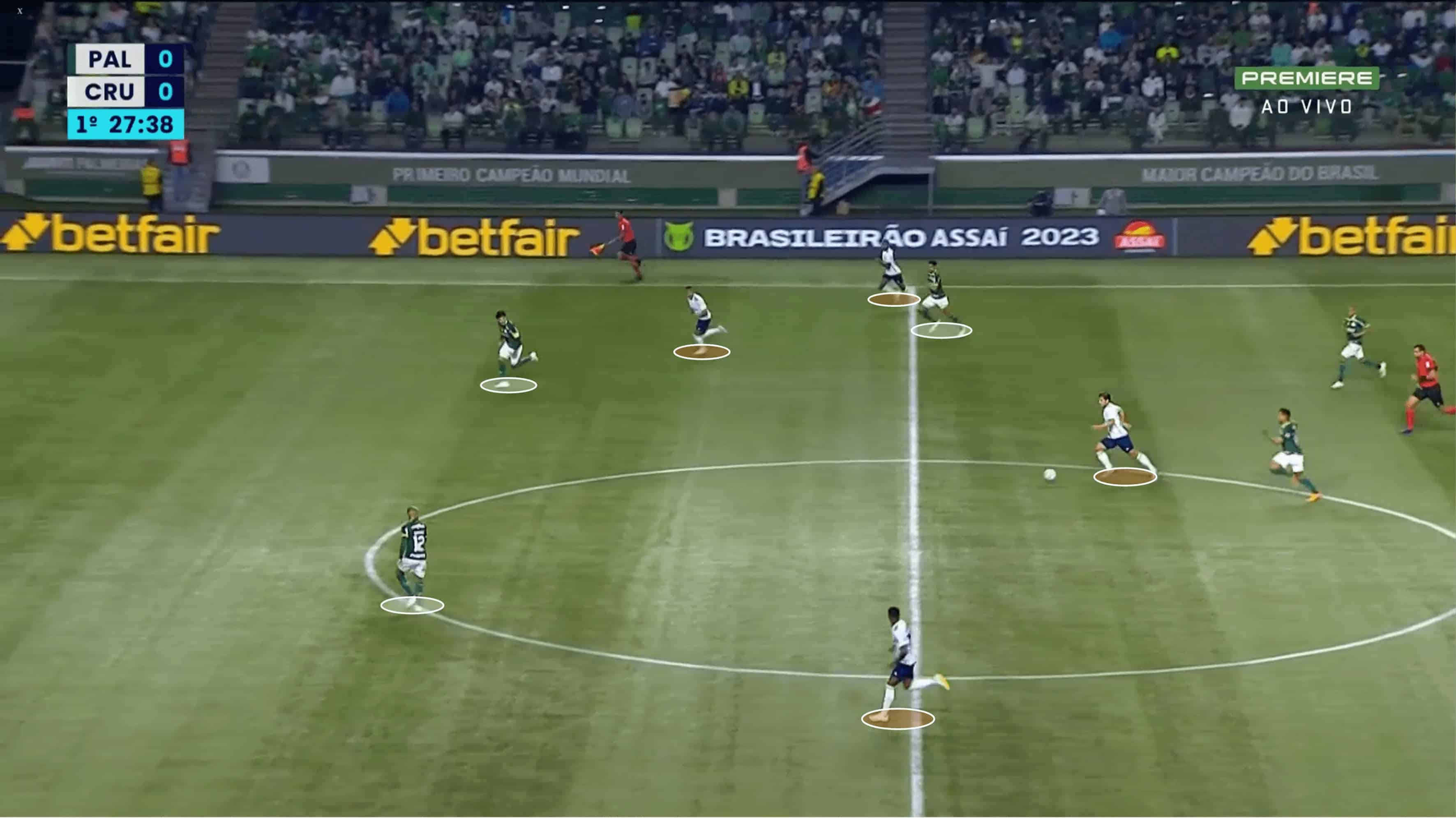
Conclusion
It will be a balanced game, yet we expect an on-possession predominance by Palmeiras while Boca wait for the right moment to hurt them through a counterattack. Although less probable, Jorge Almirón also can opt for a less conservative approach and try to rule the game with possession since they are playing at home.
Due to their relatively recent international achievements, it is normal to attribute favouritism to Palmeiras. However, we can’t forget Boca’s historical accomplishments (six Libertadores titles) and, even more impactful, the stadium where they will play.
With that said, we are all very curious to understand what will be the managers’ approaches. Will Almirón maintain Bocas’ identity of dominating the opponent with the ball? Or will they opt for a more conservative strategy, using a five-man backline and looking for the error of Palmeiras?

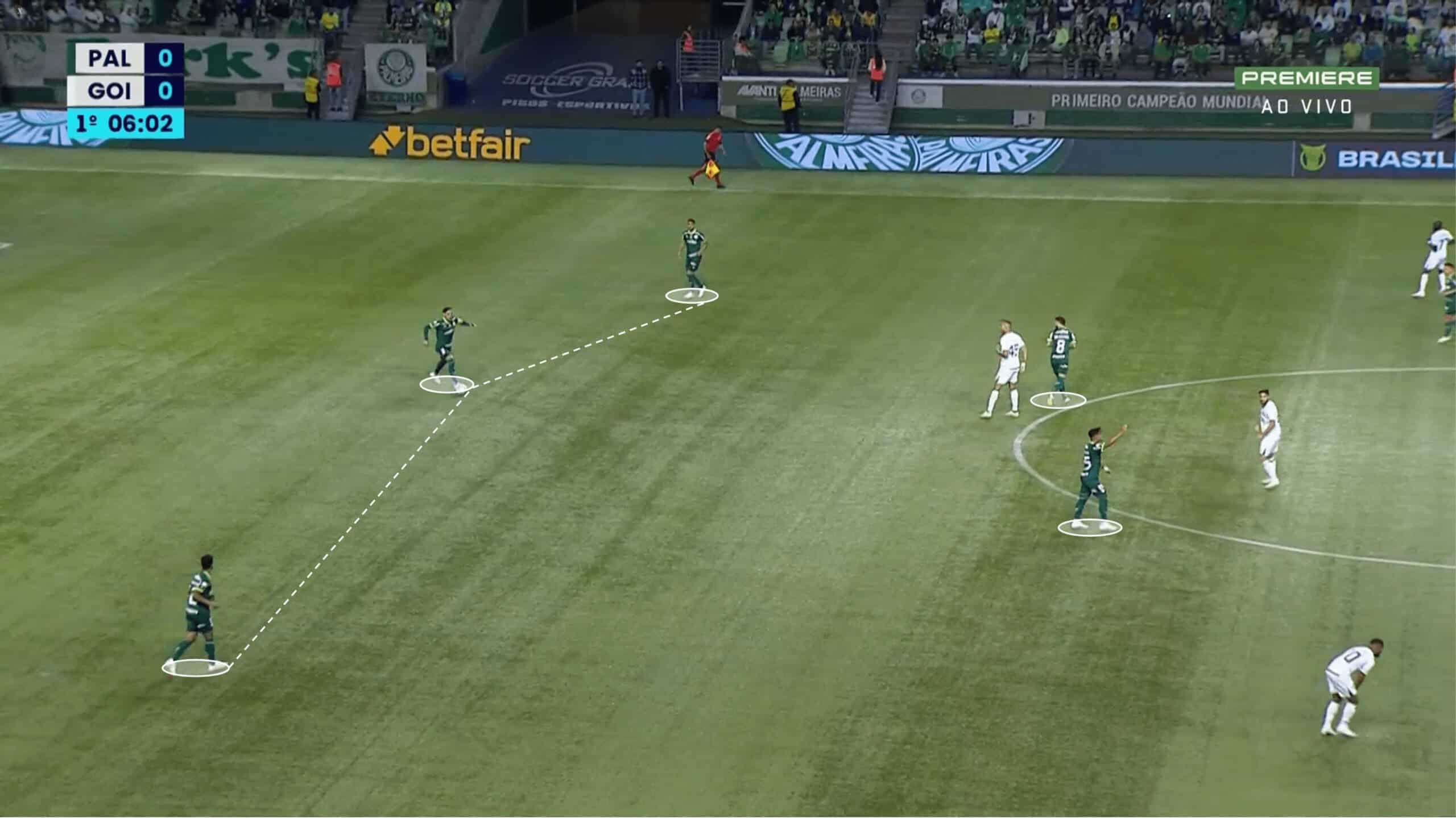




Comments